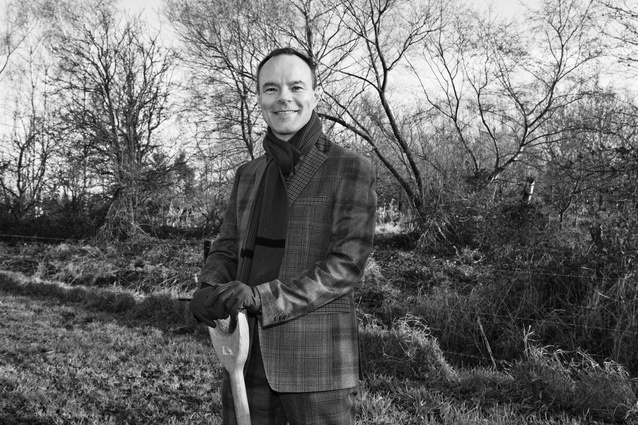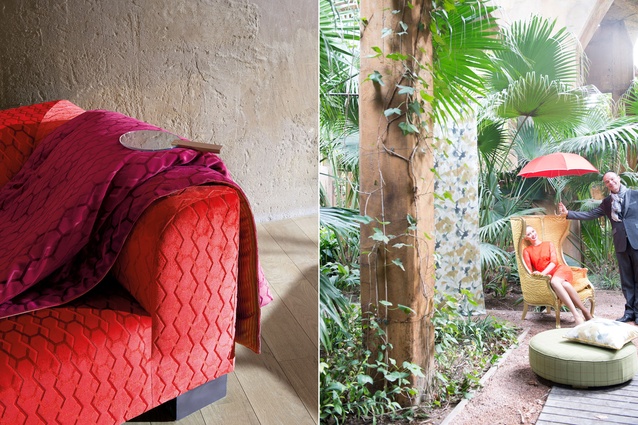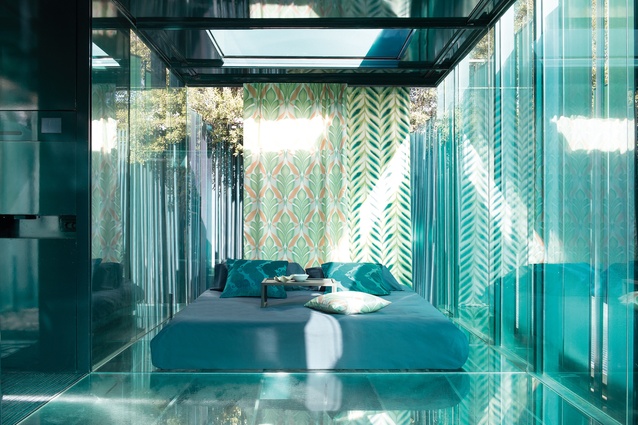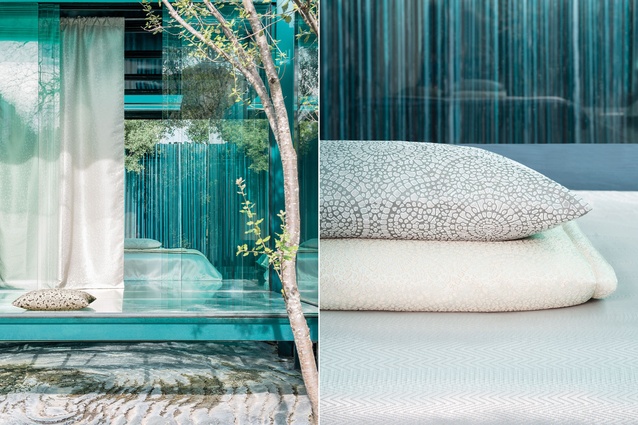Designer interview: Olivier Delhomme
As Olivier Delhomme – the brains behind textiles brand FR-One – prepares for a trip to New Zealand, he speaks to Interior about fire and his mission to quench it in style.
Interior: What prompted the world to start using fire-retardant (FR) fabrics?
Olivier Delhomme: Legislators became concerned in the ‘70s with the spread of casualties resulting from people falling asleep with lit cigarettes. The tobacco industry claimed, at the time, that self-extinguishing cigarettes were not technically possible and pointed the finger elsewhere.
Interior: What was the gap in the market or what deficiency did you notice in previous FR fibres that you sought to address with FR-One?
OD: It was a lack of consistency in delivering and maintaining a continuous supply of FR fabrics that comply with fire standards (companies, by law, are only asked to test their products once every three to five years). We saw several opportunities in the market to create a quality that would meet FR standards, not just from one country but worldwide, and demonstrate that such a premium standard was achievable at a lower price thus demystifying the technology and making it available to all.
Interior: How would you explain, to a non-expert, the process that makes this fabric fire retardant?
OD: For a fire to grow you need combustible material and fuel. In our case, the combustible material is fabric and the fuel is oxygen. Remove those and you have a flame-retardant product. Simplifying the process: if you look at the DNA of polyester, you will see oxygen links. Take them away as much as possible, replace them with carbonised links (i.e. material that has already burnt) and you get a fabric on which fire cannot grow. It is a fabric that has limited or no oxygen to fuel a fire; therefore the fire keeps trying to light already ‘burnt’ material… and, as a result, the fabric self-extinguishes.
Interior: How did you arrive at this? What is your background?
OD: I had an engineering background; then I escaped to business studies and then fell into the beautiful world of fabrics – fortunate enough to always be part of the creative studio process.
Interior: What other practical considerations did you have while designing these fabrics?
OD: Many! We monitor 19 mechanical properties for drapery and 27 for upholstery fabrics.
Interior: Tell us a little about the certification processes – what were the most rigorous tests?
OD: A nightmare! Module E [a certification process that] is given by Lloyd’s Register and took us three years. Even the Register itself questioned why we opted for the highest and most cumbersome module when 98% of the industry complies with an easier one. Module E is synonymous with what we do; in short, what you buy is tested (regardless of previous compliance) and every new order will require its own certification – and a single International Maritime Organization (IMO) test costs approximately €1,500 ($2,000). This applies for a cushion (i.e. ½ metre of fabric) or for a sofa (16 metres). Larger orders, even if made from the same batch, will demand multiple testing to ensure continuity within the production. You cannot escape the rigorous IMO’s Marine Equipment Directive controls and, in my opinion, this industry got it right!
Interior: Are these fabrics aimed mainly at the commercial interior sector or are they also being used in residential?
OD: Our background is ‘commercial’. It has a look and feel that we perfected quickly in 2007/8; hence, we have progressed into what the range is now: an editorial-like range with varied textures, constructions and designs, well outside the usual constricting boundaries of a ‘commercial’ product. What you see, what you touch, is a gorgeous piece of fabric that feels like silk that drapes like linen or even behaves like wool. Neutral, washable, easy to care for and with an extended longevity: it is a perfect offer for a residential environment.
Interior: Are they wearable (i.e fashion design?). If not, are there plans to make them so?
OD: I am wearing pieces from our new collection ‘Wynnshire’ now! Also, we are sponsoring a competition at the office for the most beautiful garment made with our brand-new collection. Fashion fabrics are designed in a slightly different way where the impact is more important than the longevity. Maybe one day, if you really, really ask!
Interior: Safety is not usually ‘sexy’, but your fabrics seem to achieve lots of varied moods and looks. How do you arrive at the FR One aesthetic?
OD: Being brought up in France, dragged by my mum to every single art exhibition, and given exposure to the world, awareness of tomorrow’s trends and of our glorious past classics. Shake it, squeeze it, make it ‘now’, with a twist that makes it obvious and desirable. Then add to it a list of technicalities that reads like a 4,000-metre hurdles race and you have a FR-One fabric.
Interior: Are there any uses that have been given to your fabric that you hadn’t foreseen?
OD: Always: we work with designers and their creativity is limitless. FR-One has been used in underwater cabins, every automotive vehicle I can think of, mobile homes, trains, planes… if it moves, we are there.
Interior: What is the future of the commercial textile industry?
OD: I could give a lecture on the subject! Fabrics were the ultimate symbol of luxury and then just became yet another product of consumerism: disposable, unnoticeable. Quietly in the background, fabrics are regaining their purposes. They breathe, regulate temperature, protect, create energy, reconstruct damaged tissues and organs; they are going to be what they have always been: the very useful, decorative expressions of ourselves with a lot of functionality.














